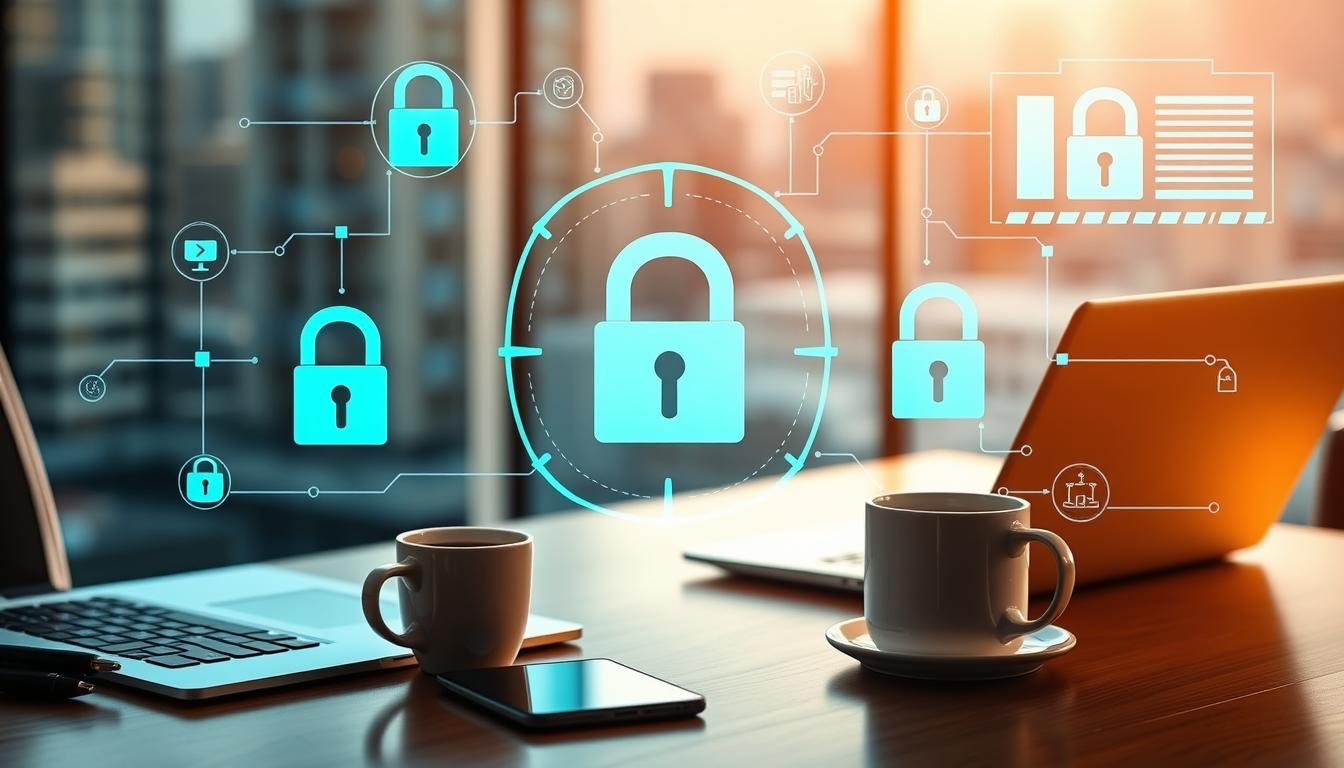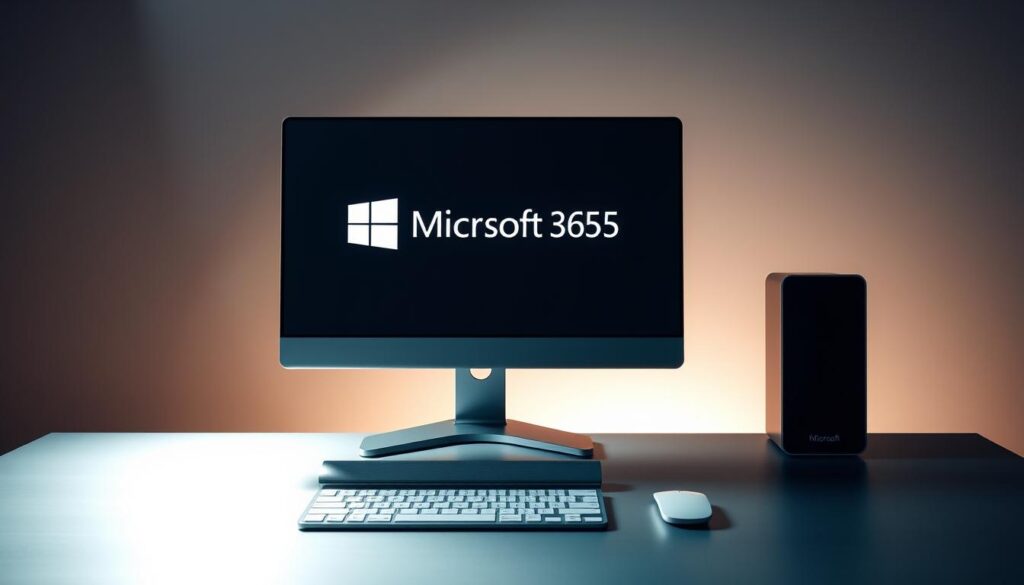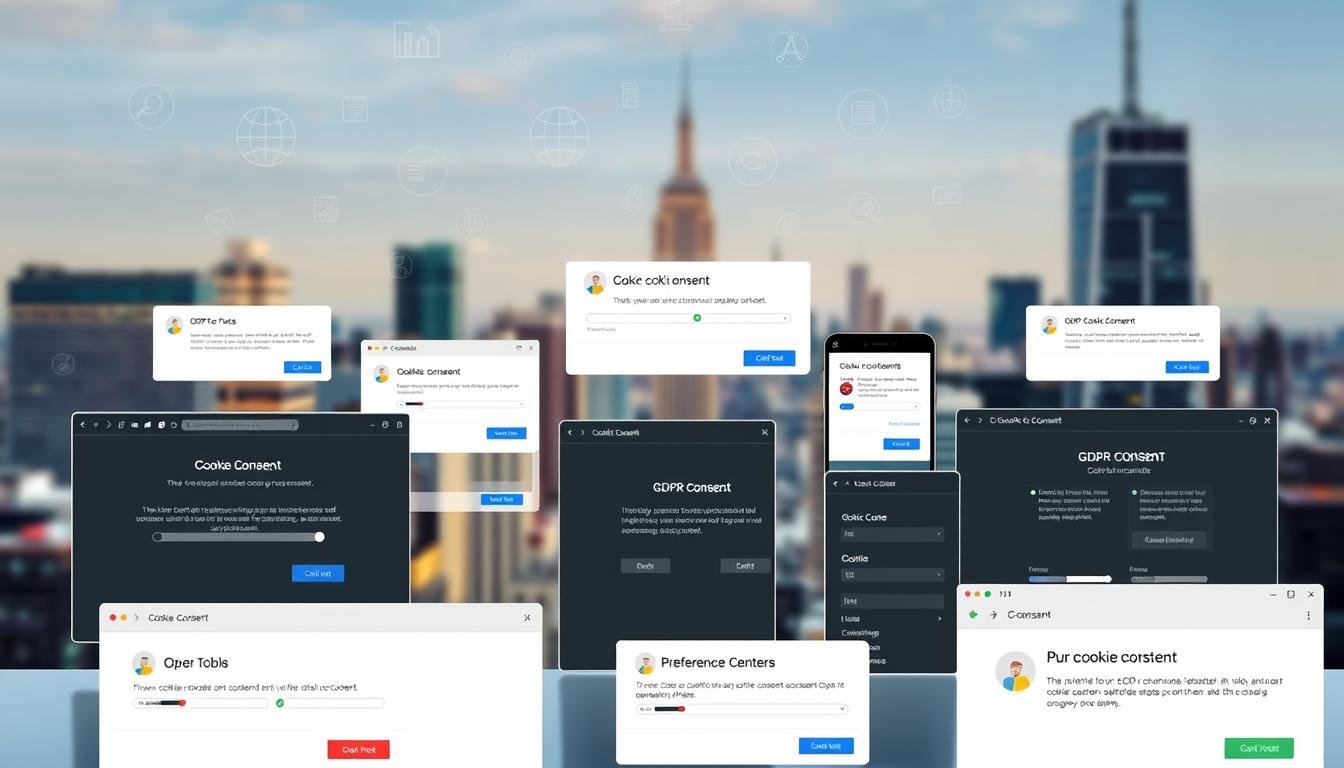Have you ever wondered how safe your messages really are when sent online? In today’s digital age, the need for secure communication has never been more critical. With cyber threats on the rise, protecting sensitive information is a top priority for both individuals and businesses.
Unencrypted data can easily fall into the wrong hands, leading to severe consequences like financial loss or legal troubles. Real-world breaches have shown just how vulnerable our digital exchanges can be. That’s why understanding the importance of secure communication is essential.
This article dives into practical solutions for safeguarding your messages. Whether you’re using Gmail or Microsoft 365, we’ll guide you step-by-step to ensure your data stays protected. By the end, you’ll have actionable strategies to enhance your peace of mind and meet compliance requirements.
Key Takeaways
- Secure communication is vital in today’s digital world.
- Unprotected data can lead to financial and legal issues.
- Practical solutions are available for Gmail and Microsoft 365 users.
- Step-by-step guidance ensures effective implementation.
- Proper protection brings peace of mind and compliance.
Why Email Encryption is Essential for Secure Communication
In a world where digital threats are escalating, safeguarding your messages is no longer optional. Unprotected communications can be intercepted easily, leaving sensitive information exposed. This makes encryption a critical tool for ensuring privacy and security.
The Risks of Unencrypted Emails
Sending messages without encryption is like mailing a postcard—anyone can read it. Interceptors can access your data during transmission, leading to potential breaches. According to the 2023 Verizon Data Breach Investigations Report, 73% of cyberattacks start with email, highlighting the vulnerability of unsecured communications.
Non-compliance with regulations like HIPAA or PCI DSS can result in severe legal consequences. Businesses face an average cost of $4.45 million per data breach, as reported by IBM in 2023. These risks underscore the importance of adopting robust security measures.
Benefits of Email Encryption
Encryption ensures that only the intended recipient can access your messages. It provides data integrity, meaning the content remains unchanged during transmission. Authentication features verify the sender’s identity, reducing the risk of phishing attacks.
For industries like healthcare and legal, encryption is vital for protecting confidential information. It also helps organizations meet compliance requirements, avoiding hefty fines and reputational damage. By encrypting attachments, you add an extra layer of security, ensuring sensitive files remain protected.
In summary, encryption is not just a technical safeguard—it’s a necessity for maintaining trust and security in today’s digital world.
Understanding Email Encryption: How It Works
The way your data travels online can make or break its security. Protecting sensitive information requires more than just a strong password. It involves advanced technologies that shield your messages from unauthorized access.
What is Transport Layer Security (TLS)?
Transport Layer Security (TLS) is a protocol that ensures your data stays safe while in transit. It acts as a secure tunnel between the sender and receiver, preventing hackers from intercepting the information. However, TLS only protects data during transmission, not when it’s stored.
This layer security is widely used by platforms like Gmail and Microsoft 365. For example, when you see a lock icon next to a sender’s name, it indicates TLS is active. While effective, TLS alone isn’t enough for complete protection.
End-to-End Encryption Explained
Unlike TLS, end-to-end encryption ensures that only the intended recipient can read the message. It uses a pair of keys—a public key to encrypts emails and a private key to decrypt them. This method is highly secure, as even the service provider cannot access the content.
Protocols like S/MIME and PGP rely on this approach. S/MIME, for instance, requires both parties to exchange certificates. Apple’s iOS devices use S/MIME to secure messages, while Gmail’s lock icon color system indicates different levels of encryption.
By combining TLS and end-to-end encryption, hybrid models offer enhanced security. However, they also come with additional overhead, which can impact performance. Understanding these mechanisms helps you choose the right level of protection for your needs.
Email Encryption for Gmail: A Step-by-Step Guide
Gmail offers built-in solutions to help you send messages safely. Whether you’re sharing sensitive data or just want extra privacy, these features are easy to use. Let’s explore how to encrypt emails and keep your communications secure.
Using Gmail’s Confidential Mode
Confidential Mode is a simple way to add security to your messages. It lets you set expiration dates and restrict forwarding. You can also choose an sms passcode for added protection.
However, this mode has limitations. Recipients can still take screenshots, so it’s not foolproof. To enable it, click the lock icon in the compose window. Select your preferred settings and send encrypted messages with ease.
Setting Up S/MIME Encryption in Gmail
For stronger security, S/MIME is a great option. It requires a Google Workspace Enterprise account and admin setup. First, configure the Admin Console to enable S/MIME for your domain.
Next, install certificates for each user. Recipients must also support S/MIME for full compatibility. Check the lock icon status—green means the message is fully encrypted, while grey indicates partial protection.
By following these steps, you can ensure your data stays safe across devices. Whether you’re on mobile or desktop, Gmail’s tools make it simple to protect your communications.
How to Encrypt Emails in Microsoft 365
Microsoft 365 provides robust tools to secure your digital communications effectively. Whether you’re sharing sensitive data or ensuring compliance, these features are designed to keep your information safe. Let’s explore two key methods: Microsoft Purview Message Encryption and S/MIME in Outlook.
Microsoft Purview Message Encryption
Microsoft Purview Message Encryption (MPME) is a powerful feature for protecting your communications. It requires an Enterprise E3 or higher license. With MPME, you can encrypt emails and attachments, ensuring only authorized recipients can access them.
You can choose between “Do Not Forward” and “Encrypt-Only” options. The former restricts forwarding, while the latter ensures the message remains secure. Recipients receive a seamless experience, whether they use Microsoft 365 or other platforms.
Setting up MPME is straightforward. Navigate to the Microsoft 365 Admin Center, enable the feature, and configure your policies. Auto-encrypt rules can also be applied to specific types of messages, saving time and effort.
Using S/MIME in Outlook
S/MIME offers another layer of security for your communications. It requires a digital ID and certificate management through the Trust Center. Both the sender and recipient must support S/MIME for full compatibility.
To use S/MIME, install the necessary certificates and configure Outlook. The process varies slightly between the New and Classic versions. Once set up, you can send encrypted messages with confidence.
Recipients will see a lock icon indicating the message’s security level. Green means full encryption, while grey indicates partial protection. Mobile Outlook users can also benefit from S/MIME, ensuring consistent security across devices.
By combining MPME and S/MIME, you can create a comprehensive security strategy. This approach ensures your data remains protected, whether you’re on desktop or mobile.
Comparing Email Encryption Options: Gmail vs. Microsoft 365
When it comes to securing your digital communications, not all platforms are created equal. Both Gmail and Microsoft 365 offer robust tools, but understanding their differences can help you make an informed choice. Let’s dive into the strengths and limitations of each platform.
Strengths and Limitations of Each Platform
Gmail boasts 99.9% TLS coverage, ensuring most messages are protected during transit. Its Confidential Mode is user-friendly, offering features like expiration dates and passcodes. However, it lacks per-message control, which can be a drawback for businesses needing granular security.
Microsoft 365, on the other hand, provides per-message control through Microsoft Purview Message Encryption. This allows for more tailored security settings. However, it requires an Enterprise E3 or higher license, which can be costly for smaller organizations.
Choosing the Right Encryption Method for Your Needs
Selecting the right tool depends on your specific requirements. If you need broad coverage and ease of use, Gmail might be the better choice. For businesses requiring detailed control and compliance, Microsoft 365 offers more advanced features.
Consider factors like admin management overhead, cross-platform compatibility, and industry-specific compliance. Both platforms have their merits, but your decision should align with your security needs and budget.
Best Practices for Secure Email Communication
Securing your digital communications starts with adopting best practices. Whether you’re an individual or a business, protecting sensitive data is crucial. With 81% of breaches involving weak or stolen credentials, it’s clear that strong security measures are essential.
Creating Strong Passwords and Enabling Two-Factor Authentication
One of the simplest yet most effective ways to enhance security is by creating strong passwords. Follow the NIST guidelines, which recommend using long, unique passphrases instead of complex, hard-to-remember passwords. Avoid reusing passwords across multiple accounts.
Adding an extra layer of protection, two-factor authentication (2FA) ensures that even if your password is compromised, unauthorized access is blocked. Consider using FIDO2 security keys for a more robust solution. Microsoft’s conditional access policies can also help manage login attempts effectively.
Recognizing and Avoiding Phishing Attempts
Phishing remains one of the most common threats to digital security. These attacks often trick users into revealing sensitive information or downloading malicious files. Be cautious of unexpected emails, especially those requesting urgent action or personal details.
Tools like phishing simulation software can help train users to recognize suspicious messages. Additionally, implementing DMARC, DKIM, and SPF configurations can prevent spoofing and ensure email authenticity. Always scan attachments and sandbox suspicious content before opening.
By staying vigilant and adopting these best practices, you can significantly reduce the risk of breaches and protect your digital communications.
How to Verify Email Encryption in Gmail and Microsoft 365
Ensuring your messages are secure requires more than just sending them—it’s about verifying their safety. Both Gmail and Microsoft 365 provide tools to check the encryption status of your communications. This step is crucial for maintaining trust and compliance in your digital exchanges.
Checking Encryption Status in Gmail
Gmail’s security details panel offers a straightforward way to verify encryption. Look for the lock icon next to the sender’s name. A green lock indicates full encryption, while grey means partial protection. You can also analyze the message header for additional details.
Third-party checker tools can further validate the security of your encrypted email. These tools decode the certificate chain and MX records, ensuring the message’s integrity. Mobile app indicators also provide real-time updates on encryption status.
Verifying Encryption in Microsoft 365
Outlook’s message encryption indicators are equally user-friendly. The lock icon in the message header shows the level of protection. Green signifies full encryption, while grey indicates partial or no encryption. Delivery reports and non-delivery diagnostics offer additional insights.
Recipient confirmation protocols and audit log reviews ensure that the message was received securely. These features are especially useful for businesses needing to meet compliance standards. By leveraging these tools, you can confidently verify the safety of your communications.
Common Challenges in Email Encryption and How to Overcome Them
Protecting your digital messages isn’t always smooth sailing. Even with advanced tools, you may encounter hurdles that disrupt secure communication. Understanding these challenges and knowing how to address them is key to maintaining robust security.
Dealing with Recipients Who Don’t Support Encryption
One of the most common issues is sending messages to recipients who lack encryption support. According to the Enterprise Strategy Group, 43% of enterprises face cross-platform encryption failures. This can lead to undelivered or unreadable messages.
To overcome this, consider using secure web portals like Microsoft’s external recipient portal. These platforms allow recipients to access encrypted content without requiring specific software. Another solution is educating recipients on how to enable encryption or sharing certificates to ensure compatibility.
Handling Encryption Errors and Issues
Encryption errors can disrupt communication and create frustration. Common issues include certificate mismatches, unsupported protocols, or software conflicts. Troubleshooting these problems requires a systematic approach.
Start by analyzing error codes and logs to identify the root cause. Use fallback methods like TLS when end-to-end encryption fails. Regularly test compatibility across different systems and versions to minimize disruptions. If problems persist, escalate to technical support for advanced solutions.
By addressing these challenges proactively, you can ensure your messages remain secure and accessible, even in complex scenarios.
Third-Party Tools for Enhanced Email Security
Third-party solutions can significantly boost the security of your online exchanges. While built-in features provide a solid foundation, specialized tools offer advanced capabilities to safeguard your sensitive data. These applications are designed to address specific vulnerabilities and enhance overall protection.
Overview of Popular Email Encryption Tools
Several third-party tools stand out for their robust features. Strac offers real-time redaction capabilities, ensuring sensitive information is automatically masked. Flowcrypt implements PGP encryption, providing end-to-end security for your messages. Virtru excels with its revocation features, allowing you to retract access to sent content.
These tools also support compliance reporting and key management, making them ideal for businesses. Vendor security audits and breach protection SLAs further ensure reliability. By leveraging these solutions, you can achieve a higher level of data security.
How to Integrate Third-Party Tools with Gmail and Microsoft 365
Integrating these tools is straightforward. For Flowcrypt, install the browser extension and configure it with your account. Virtru offers an Outlook plugin for seamless integration with Microsoft 365. SendSafely focuses on attachment encryption, ensuring files remain protected during transit.
API integration costs and user adoption metrics vary, so choose tools that align with your needs. Regularly review vendor updates to stay ahead of emerging threats. With the right setup, these tools can enhance your digital communication security effectively.
Email Encryption for Businesses: Compliance and Security
Businesses today face increasing pressure to protect sensitive information while meeting strict regulatory standards. With laws like HIPAA and GDPR in place, failing to secure data can lead to hefty fines and reputational damage. Implementing robust encryption policies is no longer optional—it’s a necessity.
Meeting Industry Regulations with Email Encryption
Regulations like HIPAA’s 72-hour breach notification rule and GDPR Article 32 require businesses to ensure protection of sensitive information. HIPAA mandates that breaches affecting 500 or more individuals must be reported within 72 hours. GDPR, on the other hand, emphasizes the need for technical measures like encryption to safeguard personal data.
To stay compliant, businesses should create a regulation mapping matrix. This tool helps identify which laws apply to your organization and how encryption can meet those requirements. Regularly updating this matrix ensures ongoing compliance as regulations evolve.
Implementing Encryption Policies in Your Organization
Effective encryption policies start with clear guidelines. Use policy template examples to draft documents tailored to your organization’s needs. These templates should cover key areas like security protocols, employee responsibilities, and incident response procedures.
Employee training modules are essential for successful implementation. Educate your team on the importance of encryption and how to use it correctly. Audit trail configurations can help monitor policy adherence, while vendor risk assessments ensure third-party partners meet your security standards.
Finally, conduct incident response testing to prepare for potential breaches. Data classification schemes and retention policy alignment further enhance your organization’s ability to protect sensitive information. By taking these steps, you can avoid penalties and maintain trust with your clients.
Email Encryption for Personal Use: Protecting Your Privacy
Protecting your personal information online has never been more critical. With the rise of digital threats, safeguarding your privacy is essential. Whether you’re sharing sensitive details or storing important files, taking steps to secure your personal data can prevent unauthorized access.
Securing Personal Emails in Gmail
Gmail offers built-in features to help you encrypt emails and keep your communications private. Confidential Mode is a simple option that lets you set expiration dates and restrict forwarding. For stronger protection, consider using S/MIME, which requires a Google Workspace account.
Third-party tools like ProtonMail provide end-to-end encryption (E2EE) for personal accounts. This ensures that only the intended recipient can read your messages. ProtonMail is free for basic use, making it an accessible option for individuals.
Using Encryption for Sensitive Personal Data
When handling sensitive information, such as financial documents or healthcare records, encryption is a must. The iOS Mail app supports S/MIME, allowing you to protect sensitive data on your mobile device. Configure the settings to enable encryption for outgoing messages.
PGP key management is another effective method for securing personal files. Combine this with encrypted cloud storage for added safety. Whether you’re planning your estate or sharing family protocols, these tools ensure your data remains private.
By adopting these practices, you can enhance your digital security and maintain peace of mind in your personal communications.
Future Trends in Email Encryption and Security
The landscape of digital communication is evolving rapidly, with new technologies reshaping how we protect our information. As cyber threats grow more sophisticated, the tools we use to secure our data must also advance. From quantum-safe algorithms to AI-driven threat detection, the future of security is both exciting and essential.
Emerging Technologies in Email Encryption
One of the most promising advancements is the development of post-quantum algorithms. These are designed to withstand attacks from quantum computers, which could potentially break traditional encryption methods. Behavioral biometrics is another innovation, using unique user patterns to verify identities and prevent unauthorized access.
Context-aware encryption is also gaining traction. This approach adjusts security levels based on the sensitivity of the information being shared. Automated policy enforcement ensures that security measures are consistently applied, reducing human error and enhancing protection.
How AI is Shaping the Future of Email Security
Artificial intelligence is revolutionizing the way we detect and respond to threats. Tools like Darktrace use AI to identify unusual patterns in real-time, stopping attacks before they cause harm. Generative AI is also being used to simulate phishing attempts, helping organizations train their teams to recognize and avoid scams.
Zero-trust models are becoming more prevalent, requiring continuous verification of user identities. Decentralized identity systems give individuals more control over their personal data, reducing reliance on centralized databases. Homomorphic encryption allows computations on encrypted information without decrypting it, offering a new level of privacy.
Self-destructing metadata ensures that sensitive details are automatically deleted after a set period, minimizing exposure. These advancements highlight the importance of staying ahead in the ever-changing world of digital security.
Conclusion: Taking Control of Your Email Security
Taking charge of your digital safety starts with understanding the tools at your disposal. From encryption protocols like TLS and S/MIME to advanced third-party solutions, securing your communications is essential. The stakes are high for both businesses and individuals, making it urgent to implement these measures now.
Hybrid solutions that combine multiple layers of protection offer the best defense against evolving threats. Promoting a culture of email security within your organization or personal practices ensures everyone stays vigilant. Staying informed about upcoming standards and technologies will keep you ahead of potential risks.
Start by conducting a thorough audit of your current security practices. Identify gaps and take action to protect sensitive information effectively. Remember, your digital safety is in your hands—make it a priority today.







